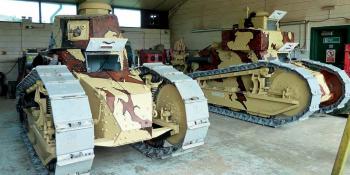Tim Gosling looks at the ways the US Army provided a supply of clean water for their troops during World War One
Joining the Allied effort against Germany after World War One had been raging for almost three years, the United States had the advantage of having observed how the French and British Armies had approached a range of supply problems. Maintaining a supply of fresh water to the front-line troops might not sound particularly difficult, but with local water supplies being undrinkable (due to disease and occasionally being deliberately poisoned) and each fighting man requiring approximately half a gallon of water a day, the constant supply of fresh water became a very important issue.
At the beginning of the war the British and French forces found that the availability of fresh water from wells and springs was inadequate to meet demand and as a result there were high incidences of sickness from the use of polluted water. To overcome this problem the responsibility for the supply of water was given to the French Service des Eaux and the British Army Service Corps. Fresh water was obtained from springs or bore holes and pumped into metal (or sometimes canvas) holding tanks from where the water co…




